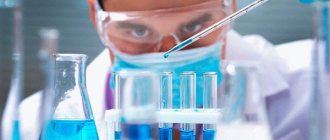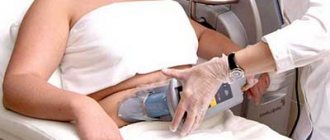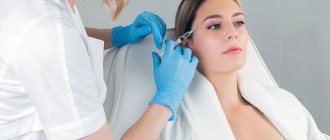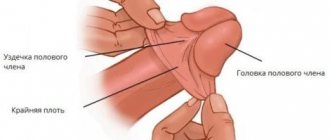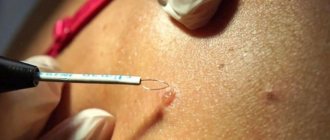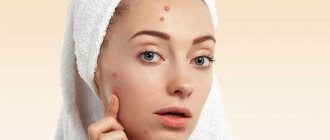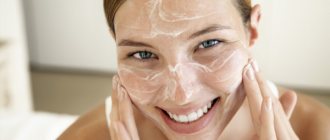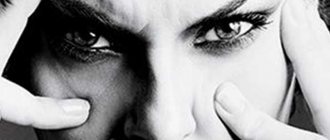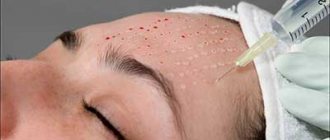Colloidal scars (also called keloids) are thickening and changes in the skin that appear for various reasons.
A keloid can appear as a result of improper healing of a wound or cut, during the healing of various skin lesions and infectious infections. If stretch marks, atrophic and tight scars are at the same level as the rest of the skin, then keloids seem to rise above it.
This skin tumor is not at all dangerous, but many are trying to solve this problem because of the unesthetic appearance of the healed area of skin. How to remove colloidal scar? Let's look at this issue in more detail.
Why does a scar form?
Keloids are divided into two groups according to their formation:
Primary (spontaneous)
These scars appear on apparently healthy skin for no apparent reason.
The appearance of such keloids can result from:
- Hormonal imbalances;
- Internal injuries;
- Pregnancy;
- Chronic diseases.
Typically, scarring occurs on the neck, back, chin and jaw line, ears, especially the earlobes.
Secondary (false)
Such scars occur in areas of previously damaged skin due to any injuries, skin lesions and ulcers. Wound healing is often inhibited by infection, causing inflammation and scarring.
The reasons include the following:
- Unprofessional surgical intervention;
- Injuries, cuts and wounds healed without proper care and supervision of a specialist;
- Consequences of severe skin diseases, such as acne.
Symptoms
Symptoms of a colloidal nodule of the thyroid gland in the initial stage of formation are subtle. There is general lethargy, which is explained by overwork. Only a doctor can detect colloid nodes at an early stage by palpating the neck. As the disease progresses, the tumor increases in size and signs of the disease appear. It can be:
- labored breathing;
- weight loss;
- trembling fingers;
- problems with swallowing;
- change in voice tone.
The appearance of any physiological changes should always be alarming. In case of such pathologies, you need to contact an endocrinologist who works with the internal secretion organs to undergo diagnostics.
The appearance of a keloid
There are three stages before the complete formation of a keloid:
- During the first 7-10 days, a thin epithelial layer appears on the affected area of the skin, which may be accompanied by painful sensations;
- Next, scarring occurs within 25-30 days, scar tissue protrudes above the main skin;
- After the formation of a scar in the affected area, the percentage of connective tissue increases, blood vessels disappear over time, and the scar becomes denser.
About the colloid node of the thyroid gland
In first place among diseases of the thyroid gland is a colloid node, which is a changed area of the thyroid gland visible during an ultrasound of this organ of the endocrine system or during a physical examination. The colloidal node of the thyroid gland is filled with colloid - the contents are completely consistent with the substance that fills physiologically normal follicles. That is why most of the identified clinical cases are not treated.
Only such a decoction will trigger REGENERATION of the thyroid gland
The goiter will disappear in 3 days! This remedy has become a sensation in the treatment of the thyroid gland!
- About the reasons
- Clinical manifestations
- Diagnostics
- Treatment
About the reasons
The reasons leading to the development of this pathology are quite diverse:
- Iodine deficiency provokes a compensatory increase in various parts of the gland in order to catch more iodine from the blood.
- Periods of physiological changes in the body associated with an increase in the load on the thyroid gland, such as puberty and the development of pregnancy.
- Impaired blood circulation in one of the lobes causes the accumulation of colloid in the tissues, which leads to the formation of a node.
- The presence of congenital anomalies, hemorrhages due to injury, impaired outflow of colloid leads to the formation of a cyst. Epithelial cells or connective tissue form its shell, which protects the contents of the cyst from healthy gland tissue. After all, its cavity may contain not only colloid, but also blood or pus.
- Frequent nervous overstrain and hypothermia of the body cause the development of local spasm of blood vessels, this leads to impaired nutrition of some parts of the gland and a decrease in local immunity. All this leads to disruption of the physiological mechanism of cell division.
- A negative environmental background ensures the entry of various free radicals and carcinogens into the human body. Their impact leads to disruption of the genome of the cells of the gland lobe and uncontrolled division begins, thus forming a formation that can become malignant.
- Previous infectious diseases cause the development of swelling of some parts of the thyroid gland, which can create favorable conditions for the development of a colloid node.
- In rare cases, there is a hereditary burden of development of the node.
The colloidal node can be single or multiple; the growth of these formations is slow. That's why they are detected by chance during preventive examinations using ultrasound.
Clinical manifestations
Mostly colloidal nodes are small in size, and due to their slow growth, they may not manifest themselves clinically for quite a long time. And the person is not aware of the existing pathology until there is an active growth of the formation in the lobe, which leads to the appearance of a cosmetic defect on the front surface of the neck and the appearance of subjective sensations:
- sore throat,
- difficulty swallowing,
- feeling of squeezing in the throat,
- lump in the throat.
When combined with toxic goiter, the existing node or nodes begin to actively secrete thyroid hormones, which causes the appearance of symptoms of thyrotoxicosis: weight loss, nervousness, hand tremors, symptoms of damage to the cardiovascular and digestive systems, which requires immediate treatment.
Since this gland pathology predominantly develops with iodine deficiency, it is worth paying attention to some clinical manifestations of this deficiency condition:
- poor appetite
- the appearance of problems with the health of teeth, skin and their derivatives (nails and hair),
- memory problems,
- headache,
- hearing problems.
If they are present, then you should contact a specialist who will prescribe appropriate treatment.
The clinical manifestations of the node directly depend on its size and the amount of hormones it produces. Some are detected by chance during an ultrasound of the right and left lobes of the gland and appear as areas that differ in color from the healthy tissue of the gland lobes. Using ultrasound, you can identify pathological formations from 5 mm.
Diagnostics
The examination of the patient begins with a visit to an endocrinologist, who begins to keep a history of the disease. During the examination, an increase or decrease in the size of the right and left lobes of the gland, its elasticity, and pain are determined; number of nodes and their density, mobility. It is important to note that the size of the right lobe of the thyroid gland is larger than the left - this is an anatomical feature of this organ. Then he proceeds to a survey and clarifies the existing symptoms and whether the node was treated by another doctor, if so, then it is specified with what drugs.
Then the patient is sent for a full examination - laboratory and instrumental diagnostic methods; only after receiving all the data will the doctor prescribe treatment.
When a node is detected, the patient must donate blood to determine the level of thyroid hormones: T3, T4, thyroid stimulating hormone, calcitonin.
To carry out scintigraphy, the patient is first given preparations with radioactive iodine, the isotopes of which are absorbed by the tissues of the gland, and with the help of a special gamma camera the areas of its accumulation are determined. When the concentration increases in the area where the node is located, it indicates the active absorption of iodine and the production of hormones. When the concentration decreases, there are no cells actively producing hormones in the control. This study is contraindicated during pregnancy.
The main diagnostic method is ultrasound of the organ.
Ultrasound is prescribed for all patients in whom nodes are identified during physical examination. It makes it possible not only to determine the exact location of the formation, but to accurately determine its size and examine intact gland tissue. On the ultrasound machine screen, the nodes are defined as anechoic formations, since they cannot reflect ultrasound waves. The gland itself has uneven contours and a heterogeneous structure.
FNA of the thyroid gland is a modern diagnostic method that allows us to speak with high accuracy about the nature of the formation. With this method, a small area of the node is taken for microscopic examination under ultrasound guidance, so as not to injure nearby organs.
Treatment
For small colloid nodes, drug treatment is not carried out; patients are recommended to introduce iodine-rich foods into their diet. And they are monitored by endocrinologists, who must be visited twice a year; before the appointment, an ultrasound must be done to monitor the dynamics of the growth of the node.
If rapid growth of the node is detected and signs of compression of nearby anatomical formations appear, surgical treatment is indicated. It can be performed under local or general anesthesia; in some cases, another ultrasound of the gland is performed before the operation. It lasts no more than an hour; at the end, a cosmetic suture is applied. Surgical treatment requires short-term hospitalization, after which the patient is discharged and is under the supervision of the treating endocrinologist for a certain period of time.
Home treatment
Time-tested folk remedies can be quite effective in preventing relapses and tumors.
Some folk remedies against keloids:
- Compresses and infusions of chamomile, geranium, St. John's wort, mint, yarrow, marshmallow root or larkspur, individually and in mixtures;
- Oils and extracts rich in vitamins, acids and antioxidants, for example, sea buckthorn, camphor, olive or melaleuca oil, known for its healing and healing properties;
- The well-known cabbage, in particular, crushed leaves of the plant with honey give a positive effect against colloidal scars.
Physical methods
In some cases, it is necessary to resort to physical methods of influence - this is the most effective, but is already considered surgical intervention:
. The formation is removed almost painlessly using a carbon dioxide laser. But in this case, relapses are possible. The scar becomes less noticeable, but does not disappear completely;
Laser resurfacing, scar excision
A method that allows you to completely remove an unwanted defect. But in this case, it is necessary to carefully monitor the wound, since even a hair follicle can lead to a relapse;
Removal of colloid scar surgically.
. This method is often prescribed in addition to surgical excision of the scar. It is necessary to conduct 4 sessions per day. Recurrences are rare, but hyperpigmentation may occur. There is a slight risk of developing cancer;
X-ray irradiation of the formation site
Colloidal tissue is frozen with liquid nitrogen for 20-30 seconds. After 3 procedures, the result is noticeable, but it is a painful treatment. Corticosteroid therapy can be added to enhance the effect.
Application of cryosurgical methods.
They have been trying to fight the problem of unaesthetic defects (scars) for a long time. Therefore, quite a lot of options for treating colloidal scars with folk remedies have also accumulated, and doctors prescribe them in certain situations, to enhance the effect of the main treatment or to prevent relapses.
But self-medication is strictly prohibited!
Prevention
By following simple rules, you will not only protect yourself from the growth of operated or treated scars, but also prevent the appearance of new keloids on the body.
To protect against colloidal scars you must:
Allergic dermatitis - causes of appearance, first symptoms and treatment in children and adults (video + 130 photos)Treatment of dermatitis - professional methods for effectively getting rid of the disease in different areas of the skin (105 photos)
Treatment of varicose veins - which specialist to contact and how the treatment procedure occurs. Stages of recovery and description of treatment (140 photos + video)
- Do not allow tissue tension around the keloid;
- Do not take risks by trying to cure a scar on your own;
- It is forbidden to massage or put pressure on the damaged area;
- Do not expose the colloid to direct sunlight and avoid high temperatures;
- Let treatment take its course, ignoring and neglecting the advice of a specialist.
With proper care and timely treatment, this problem will not cause you much trouble and worry.
Recommendations and preventive measures
Medicine has not fully studied the mechanism of the appearance of keloid scars. Therefore, none of the treatment methods guarantees that relapse will not occur. Combined treatment is most effective, as it involves the use of several methods.
Prevention of pathology is as follows:
- refusal to undergo cosmetic procedures (if a person is prone to scarring);
- following your doctor’s recommendations for skin care after mole removal;
- At the first symptoms of the disease, you can use Contractubex cream, but be sure to consult a doctor.
Failure to see a doctor in a timely manner aggravates the situation. Often patients, having tried many folk remedies, come to the clinic because the treatment turned out to be ineffective and sometimes dangerous.
To prevent the formation of keloids after operations and tightening of abrasions, it is necessary:
- use bandages that create pressure on the damaged area;
- do not self-medicate using aggressive substances (for example, vinegar);
- Do not squeeze out pustules on the scar;
- You cannot massage the scar yourself;
- do not overheat the formation, abuse the sauna, bathhouse, solarium, hot baths;
- immediately after the wound has healed, use Contractubex ointment;
- avoid the appearance and infection of abrasions;
- try to reduce the tension of the tissues around the scar.
Very rarely, such formations can pose a serious threat, but it is better to play it safe by consulting a doctor in time for a diagnosis. And also take measures to prevent them from appearing.
How to relieve itching
It is necessary to identify the cause of the itching. Without determining the factor, all actions will produce a short-term effect. If you just scratch the scar, nothing will change.
If the scar after a surgical suture itches, purchase a special drug or undergo procedures.
Ointments and solutions
The pharmacy sells special ointments that help relieve itching and irritation:
- Radevit.
- Akriderm.
- Triderm.
- Sinaflan.
- Bepanten.
- Desitin.
- Skin cap.
Peppermint solution has a calming effect on old scars. Several fresh mint leaves are steamed with boiling water. When the liquid cools down, I treat the problem area with it.
Physiotherapy and electrophoresis
The use of modern hardware allows you to quickly and painlessly get rid of itchy scars. To eliminate skin itching, use:
- laser excision, which cuts off the blood supply to the scar;
- laser grinding helps remove residual fluid, preventing the inflammatory process;
- phonophoresis using ultrasound equipment and medications;
- microcurrent affects the problem area with electrical impulses;
- The magnetic current procedure works on a similar principle, generating an electromagnetic field.
Procedural treatment is limited by contraindications and is used only as prescribed by a doctor.
Sam
0
Source:
“When I was 14 years old, I played with a gun and it led to me living in a wheelchair. But despite what you may think, I never felt like a victim. My physical and psychological scars have made me stronger and more energetic. I wanted to become a tennis player, and I became. I wanted to be a model, and guess what happened... I'm a model. I work in the fashion industry representing people who have physical limitations, but are nonetheless not limited. They love, they fight, they win, they lose. They are real and my story helps them understand their worth. Including all the scars."
